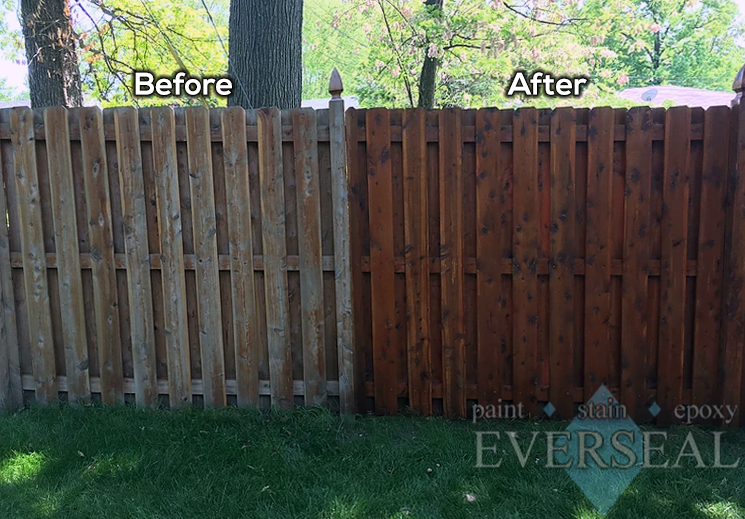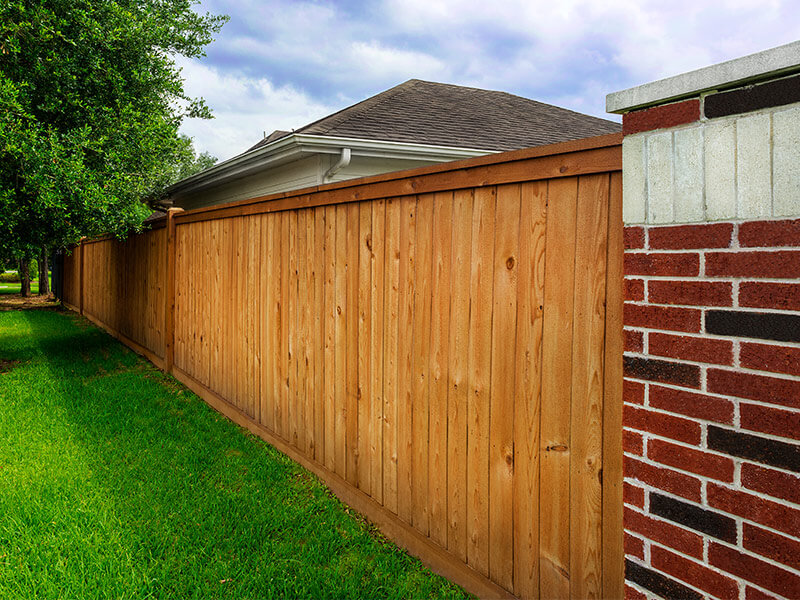Exactly How to Select the Right Fence Stain for Your Residential Property
When it comes to boosting the look and toughness of your home's fencing, picking the ideal tarnish is a vital decision that needs cautious factor to consider. Just how can you guarantee that you choose the ideal fence discolor that straightens with your building's style and upkeep demands?
Understanding Timber Kind
To pick the proper fencing discolor, it is important to have an extensive understanding of the different kinds of timber generally made use of for fencing. The choice of wood plays an essential function in identifying the long life and total aesthetics of the fencing. Cedar is a prominent choice as a result of its natural resistance to degeneration and bugs, making it a resilient option for exterior frameworks. Pine is one more common wood used in fencing, recognized for its price and convenience of staining. Ache is more vulnerable to warping and decomposing contrasted to cedar. Redwood is a premium choice understood for its striking look and all-natural resilience, though it includes a higher cost. When choosing a fencing tarnish, it is essential to think about the kind of wood being made use of to ensure compatibility and optimum protection. Understanding the attributes of different wood types will certainly assist you make an educated decision when it concerns selecting the best fence discolor for your residential property - Fence Staining Nashville TN.
Selecting the Right Shade
Selecting an ideal tone for your fencing discolor is a vital decision that substantially affects the general visual allure of your residential or commercial property. Lighter shades such as whites or light grays can make a fence show up larger and add a touch of elegance to your building. Eventually, the ideal color selection will certainly enhance the charm of your fence and boost the overall aesthetic allure of your home.

Thinking About Transparency Levels
When picking the appropriate color for your fencing tarnish, another important element to take into consideration is the degree of transparency that will certainly finest suit your residential or commercial property's aesthetic and maintenance needs. Transparency degrees in fencing stains typically fall under 3 categories: clear, semi-transparent, and solid. Clear discolorations allow the all-natural elegance of the wood to show through while offering marginal security versus the aspects. They are optimal for brand-new or well-kept fencings where showcasing the timber grain is a top priority. Semi-transparent stains supply a balance between shade enhancement and defense, permitting some wood grain to be noticeable while giving moderate shielding from UV rays and moisture. Solid stains, on the other hand, supply the most security as they completely cover the timber with a nontransparent finish. These are appropriate for older fencings or those in requirement of considerable security or Going Here shade change. Take into consideration the degree of exposure your fence faces, the desired upkeep frequency, and the visual you desire to attain when selecting the appropriate openness level for your fencing stain.
Assessing Maintenance Demands
Thinking about the long life and maintenance of your fencing, examining the upkeep needs is critical in establishing one of the most suitable fencing tarnish for your residential property. The degree of maintenance required for your fence can vary depending on elements such as the sort of wood, weather in your area, and your personal preferences.
When assessing maintenance requirements, it is important to consider the sturdiness of the fencing tarnish. Some discolorations need even more frequent reapplication than others, so choosing a stain with a much longer life-span can help in reducing the general upkeep demands of your fence (Fence Staining Service). Additionally, variables such as resistance to UV rays, water, and mold can influence how frequently you need to re-stain your fence

Examining Examples Prior To Application
Prior to using any fence stain, it is a good idea to carry out sample tests to guarantee compatibility with the wood and wanted visual outcome. Examining samples enables you to examine just how the discolor will certainly connect with the specific type of wood made use of in your fencing, as various woods can absorb stains in a different way. To start, select a tiny inconspicuous location of the fence to apply the stain examples.
Conclusion
In verdict, picking the appropriate fencing discolor for your building includes comprehending the wood kind, choosing the right shade, thinking about openness degrees, reviewing upkeep demands, and testing examples prior to application (Fence Staining Service). By taking these aspects right into factor to consider, you can make sure that your fencing discolor matches your property while offering the needed security and toughness. Make an informed choice to enhance the look and durability of your fence